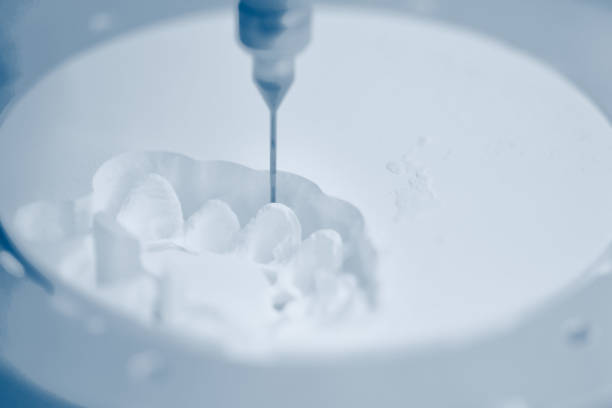Dental CAD/CAM milling burs are a crucial component of computer-assisted design and manufacturing systems used in the creation of dental restorations. They are typically made from high-quality materials, such as diamond or carbide, to ensure precision and durability.
One of the most significant advantages of using dental CAD/CAM milling burs is the ability to create dental restorations on-site, reducing the need for multiple appointments and temporary restorations. The milling process involves removing material from a block of restorative material, such as ceramic or composite resin, to create the desired shape and size of the restoration. Dental CAD/CAM milling burs are designed to work with specific CAD/CAM systems and are not interchangeable between different systems.
Materials and Design of Dental CAD/CAM Milling Burs
Materials used in dental CAD/CAM milling burs are also important. Diamond or carbide are popular materials due to their durability and ability to create precise shapes. The size and shape of the milling bur can vary depending on the type of restoration being created and the specific CAD/CAM system being used.

Advantages of Dental CAD/CAM Milling Burs over Traditional Methods
Dental CAD/CAM milling burs offer several advantages over traditional methods for creating dental restorations. They produce highly accurate and precise restorations with a level of detail that may not be possible with traditional methods. This is due to the advanced technology used in CAD/CAM systems, which allows for precise measurements and shapes to be created. The use of CAD/CAM technology and milling burs can also reduce the amount of material waste and decrease the time required for the creation of dental restorations.
Types of Dental Restorations Created with CAD/CAM Technology and Milling Burs
When it comes to dental restorations, there are several types that can be created using CAD/CAM technology and milling burs. These include crowns, bridges, veneers, inlays, and onlays. The specific type of restoration will depend on the patient's needs and the dentist's recommendations.
It is essential to note that dental CAD/CAM milling burs are designed to work with specific CAD/CAM systems and are not interchangeable between different systems. Therefore, it's crucial to ensure that the burs are compatible with the system being used.
Care and Maintenance of Dental CAD/CAM Milling Burs for Longevity
Proper care and maintenance of dental CAD/CAM milling burs are essential to ensure their longevity and effectiveness. This includes regular cleaning and sharpening of the burs, as well as ensuring that they are properly stored when not in use. Regular maintenance can help extend the life of the burs and ensure that they continue to produce accurate and precise restorations.
Advancements in Technology: 3D Printing and Dental CAD/CAM Milling Burs
Advancements in technology are continuing to improve the quality and efficiency of dental restorations created with dental CAD/CAM milling burs. 3D printing technology is being explored as a way to create more accurate and efficient dental restorations. This technology allows dentists to create restorations with even greater precision and to produce them more quickly and efficiently.

Costs and Considerations for Using Dental CAD/CAM Milling Burs
The cost of using dental CAD/CAM milling burs varies depending on the type of restoration being created and the specific CAD/CAM system being used. However, the cost is generally comparable to traditional methods for creating dental restorations.
While there are many advantages to using dental CAD/CAM milling burs, there are some downsides worth considering. For example, the initial cost of investing in the necessary technology and equipment can be high. Additionally, there may be a learning curve for dentists who are not familiar with using CAD/CAM systems.
Conclusion
In conclusion, dental CAD/CAM milling burs are a valuable tool for dental professionals who want to provide their patients with high-quality, precise, and efficient dental restorations. With their ability to create restorations on-site and their high level of accuracy, they are becoming an increasingly popular option for dental practices. Proper care and maintenance of the burs are essential to ensure their longevity and effectiveness, and advancements in technology are continuing to improve the quality and efficiency of dental restorations.



